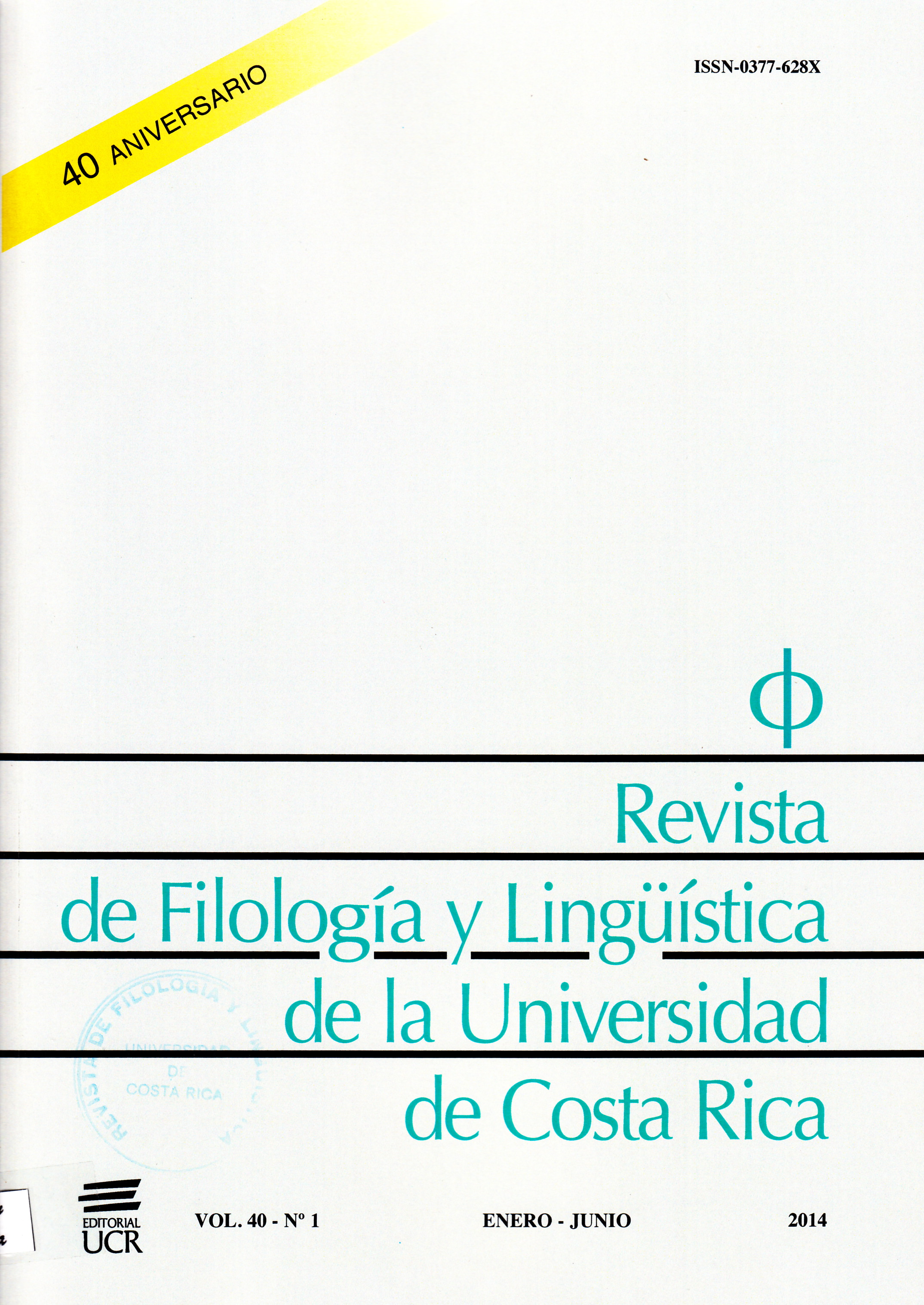Abstract
The findings of the investigation to determine the existence of an acquisition pattern of Spanish grammatical resources of reference reveal that the order of preference doesn’t change from one level to another. This happens even at the advanced level, where the use of personal pronouns continues as participant follow-up first choice in texts written by second language Spanish learners.
References
American Council on the Teaching of Foreign Languages Inc. (ACTFL). (2001). Criterios de Proficiencia – Escritura. http://www.actfl.org/ [Consulta 15 de abril de 2009].
Alvarado-Gutiérrez, M. y Vargas-Víquez, S. (2009). Adquisición de los mecanismos de referencia por estudiantes de español como segunda lengua. (Tesis de Maestría). Universidad de Costa Rica.
Calsamiglia-Blancafort, H. y Tusón-Valls, A. (2002). Las cosas del decir. Manual de análisis del discurso. Barcelona: Ariel.
Fernández-Leborans, M.J. (1999). El nombre propio. Por Bosque, I. y Demonte, V. (Coord.). Gramática descriptiva de la lengua española. (77-128). Madrid: Espasa.
Halliday M.A.K. (2004). An Introduction to Functional Grammar. Nueva York: Oxford University Press.
Halliday, M.A.K. y Hasan, R. (1976). Cohesion in English. Nueva York: Longman.
Payne, T.E. (1992). Describing morphosyntax. Cambridge University Press.
Saunders, J.K. (1999). Null and overt references in Spanish second language acquisition: A discourse perspective. (Tesis doctoral). Universidad de Texas en Austin. ProQuest,
Dissertations y Theses. (AAT 9947377). [Consulta 1 de noviembre de 2008].
Thornbury, S. (1999). How to teach grammar. England: Pearson Education Limited.
Vargas-Víquez, S. (2012). La adquisición de los recursos gramaticales de referencia por estudiantes de español como segunda lengua en el nivel principiante. Revista de Filología y Lingüística de la Universidad de Costa Rica. 38 (2), 217-238.

